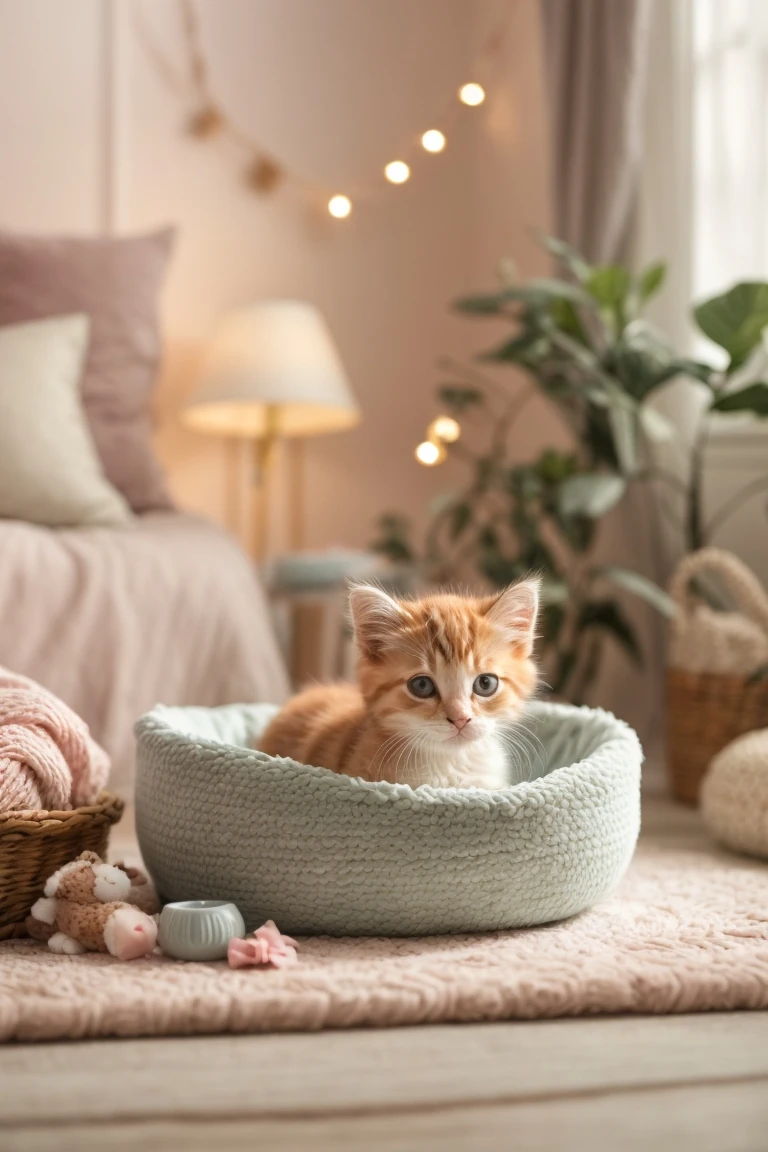Creating a Safe and Comfortable Environment for Newborn Kittens

Bringing a litter of kittens into the world is an exciting yet demanding time. As caretakers, one of the best things we can do is create an optimal environment for the new mom and fragile babies. The right setup allows the queen to focus her efforts on providing continuous care while keeping the little ones safe as they grow.
Setting Up a Birthing Area
When expecting a litter, prepare a dedicated birthing area for the cat several week before her due date.
Tips for an ideal birthing space:
- Place in a quiet, low traffic area of your home
- Provide a large, clean box or dog crate with soft bedding
- Line with puppy pads and old towels or blankets
- Ensure she has easy access to food, water, and a litter box
- Have dim, indirect lighting to satisfy nursing/sleep needs
The space should allow privacy but also enable you to discreetly monitor for any potential issues.
Essential Supplies for Newborn Care
In addition to mom's birthing setup, have these supplies on hand:
- Scale - To monitor weights and ensure nursing kittens are gaining
- Heating pad - Provides supplemental warmth; place under half the nest
- Thermometer - To monitor the temperature of the space - ideal is 85-90°F for newborns
- Feeding syringes/bottles - In case supplemental feeding is needed
- Kitten formula - For emergency backup feeding
- Flea treatment - Veterinary approved topical to administer if fleas are observed
Check that you have these before delivery in case interventions becomes necessary.
Setting Up the Space for Newborns
Once kittens arrive, optimize the environment to meet their needs:
Safety
- Ensure the area is free of hazards like choking risks or places to fall
- Check for secure walls/lids so kittens cannot climb out of the nest
- Keep area off-limits from other household pets
- Make sure electrical cables/cords are secured and hidden
Warmth
- Maintain ambient temperature of 85-90°F for the first 2-3 weeks
- Monitor surface temp of bedding - should be 95-100°F
- Place heating pad under half the nest, with room to move off if too warm
- Observe kittens closely - if chilled, they'll cry and pile together
Cleanliness
- Replace bedding promptly when soiled
- Gently wipe kittens with warm cloth if needed, being careful of cord areas
- Clean and disinfect box/crate between litters
- Wash all supplies thoroughly before reuse
Privacy
- Resist handling kittens in the first 2 weeks to allow bonding with mom
- Provide calm, dim lighting and minimal noise
- Give mom full access to leave the nest as desired
Close monitoring ensures you make adjustments as needed for kittens' well-being.
Caring for Kittens Weeks 3-8
As kittens grow more mobile and independent, continue adapting the space:
Safety
- Remove hazards like small, chewable items or toxic houseplants
- Cover electrical outlets and block access behind appliances
- Keep other pets separate unless closely supervised
Socialization
- Expand space for practicing walking, pouncing, and playing together
- Provide a variety of toys for batting, chasing, and climbing
- Introduce novel sounds and objects for healthy development
Litterbox Use
- Show kittens the litterbox location frequently
- Provide shallow box with lower entrance for their stature
- Use non-clumping, unscented litter suitable for kittens
The right setup allows kittens to gain confidence and abilities for future homes while keeping them protected.
Signs of Stress in Newborn Kittens
While an optimal environment is the goal, some stress may be unavoidable. Watch for these potential signs of distress:
- Crying or whimpering - hunger, pain, fear, etc.
- Trembling or muscle tension
- Failure to gain weight or grow
- Lethargy or lack of interest in nursing/suckling
- Seeking isolation from mom and littermates
- Diarrhea indicating gastrointestinal issues
If you observe these behaviors, identify and remedy the source of stress right away, consulting a veterinarian if needed.
When to Remove Kittens from the Mother
Ideally kittens remain with their mother until 8 weeks minimum for full socialization and weaning. Only separate earlier if:
- Mom is neglecting kittens or unable to nurse
- Mom is showing extreme stress from maternal duties
- You need to supplement feed underweight kittens
- Illness in mom or kittens poses a health risk
Premature separation can lead to health and behavior issues. Mimic the queen's care as closely as possible.
Providing an ideal environment allows healthy bonding and development. With some thoughtful preparation and attentive care, you can help the new family thrive!